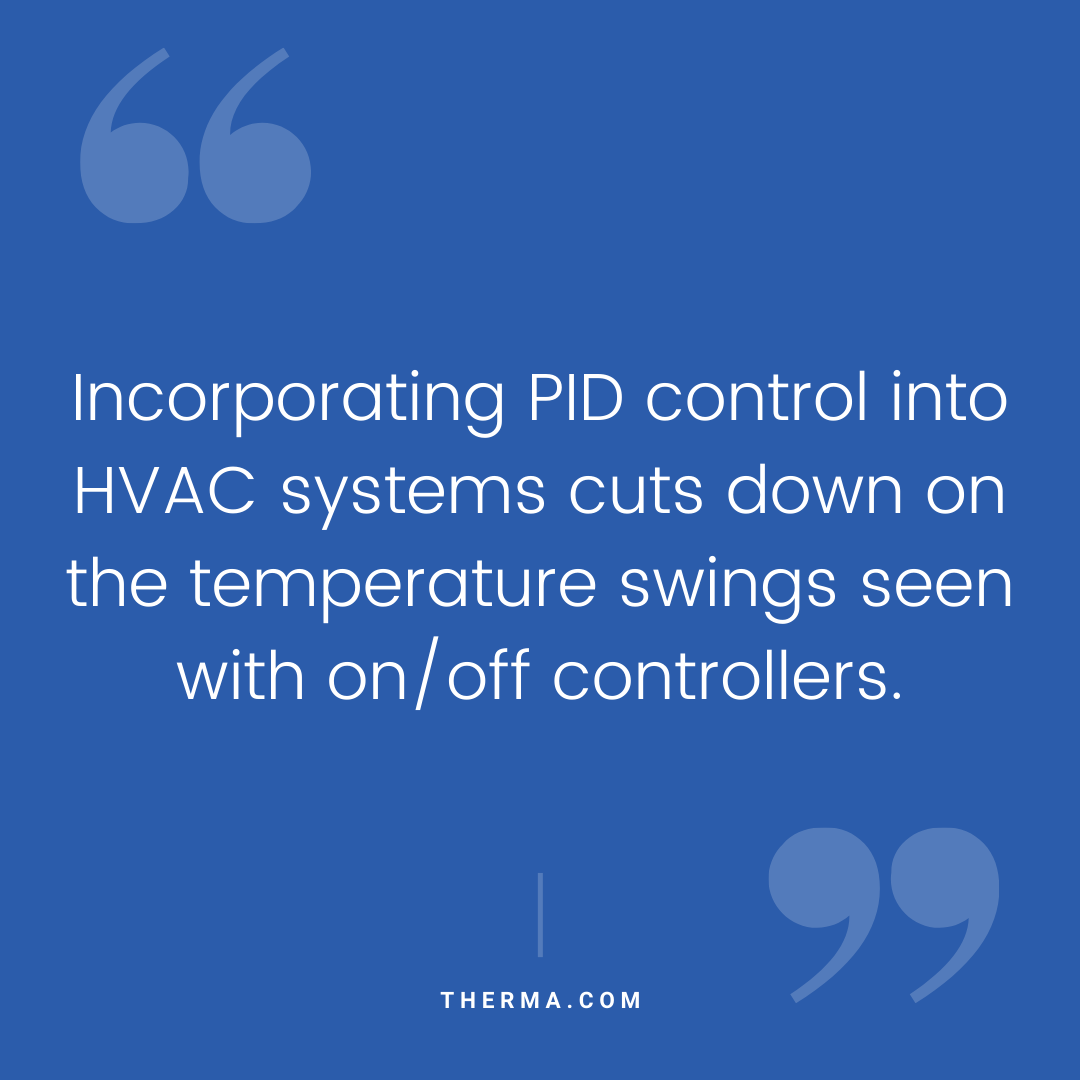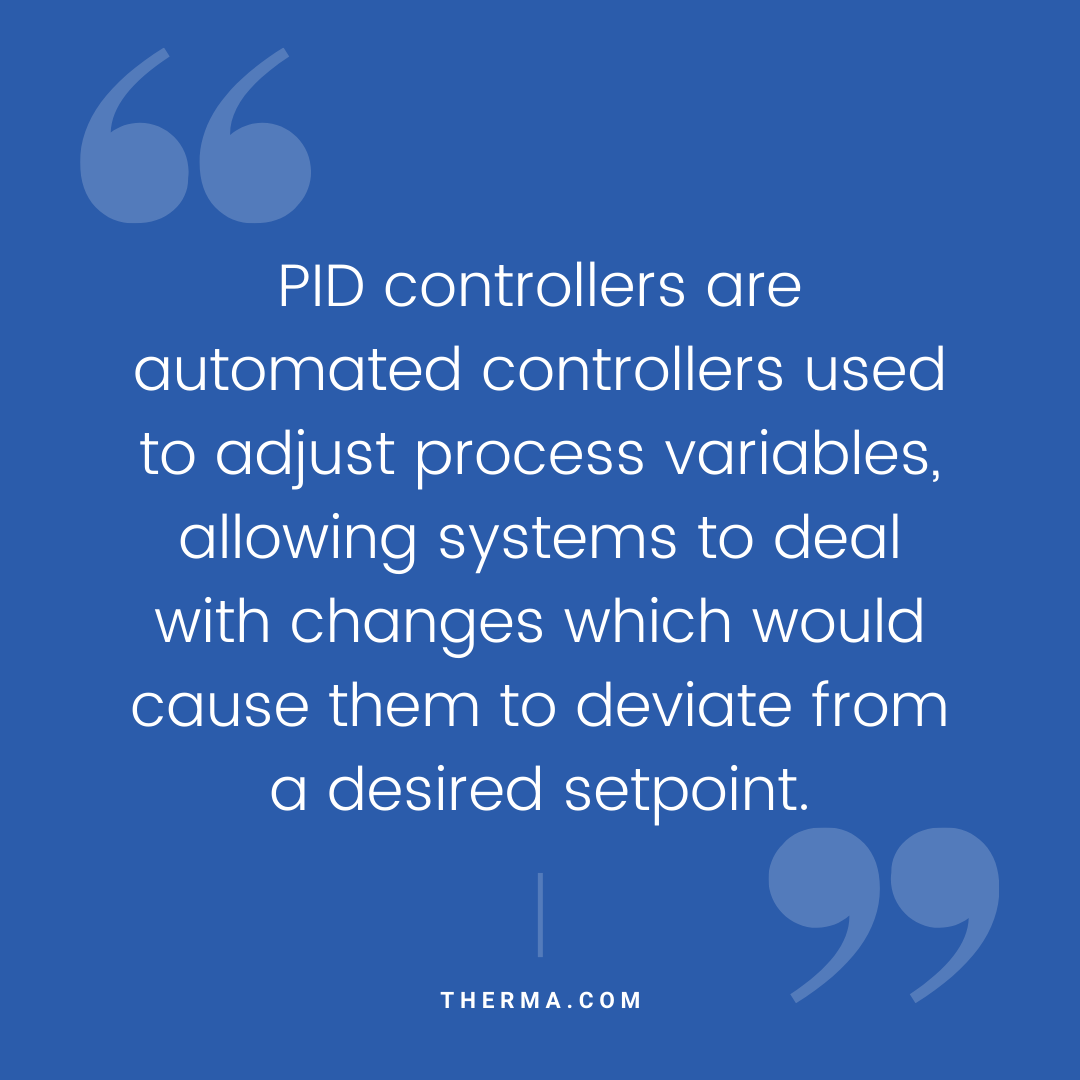by Patti Dees
Proportional, Integral, Derivative (PID) controls can increase the efficiency of HVAC systems. By automatically adjusting equipment based on sensor data, PID controllers compensate for changes in the environment. This saves energy and money, and creates a more stable and consistent occupant experience.
What are PID Controllers?
PID controllers are automated controllers used to adjust process variables, allowing systems to deal with changes which would cause them to deviate from a desired setpoint. Controllers use a closed feedback loop to control process variables such as flow, temperature and pressure.
Sensors measure process variables. The controller receives the data signal from the sensors and compares the measurement to the setpoint value. The difference between the two is called the error. The controller algorithm uses the error in three types of calculations–proportional, integral, and derivative.
Once the controller determines the direction and value of adjustments needed to meet the designated setpoint, it signals the actuators on related equipment to take actions that will produce the desired effect on the process — for example, changes in fan motor speed or water flow rates. The PID controller receives and reevaluates new sensor measurements, starting the loop over again.
Why all the Math?
Each type of calculation plays a part in bringing the system smoothly and efficiently towards the process setpoint with fewer overshoots.
- Proportional: Proportional control impacts how quickly changes are made to the system. The further the system is from zero errors, the greater the magnitude of the adjustment made. Unfortunately, as the system approaches zero errors, the adjustments get smaller and smaller, and never actually reach zero.
- Integral: To push the process closer to the setpoint, integral control uses the sum of errors from proportional control. By itself, this can lead to a swing in the system past the setpoint, because of an over correction.
- Derivative: Adding derivative control helps slow the integral control correction as the difference between the sensor measurement and setpoint approaches zero.
Even though each type leads toward the setpoint, there are drawbacks which could result in overshooting or failure to reach the desired measurement. Combining the three types of calculations increases the effectiveness of system adjustments.
Putting PID to Work in HVAC
PID controllers are useful for accuracy and stability and are recommended “in systems where the load changes often and the controller is expected to compensate automatically due to frequent changes in setpoint, the amount of energy available, or the mass to be controlled.” However, derivative control is sensitive to measurement noise from sensors, making PID controllers unsuitable for processes in which this cannot be controlled.
There are many ways to benefit from automating HVAC equipment with PID controllers. HVAC temperature control depends on several variables. Fan and pump speeds control flow rates of fluids, and the temperature and pressure of cooling/heating fluids directly impact the system’s ability for heat exchange. Examples of HVAC applications of PID controllers include:
- Adjusting motor speed or opening dampers based on pressure or temperature setpoint.
- Utilizing variable-speed drives to improve efficiency through continuous operation at lower speeds.
- Adjusting water or refrigerant flow rates to meet a temperature or pressure setpoint.
Incorporating PID control into HVAC systems cuts down on the temperature swings seen with on/off controllers. Smaller system oscillations and faster responses to changes reduces energy costs and keeps occupants comfortable.
Patti draws on her background as a chemical engineer to share information with readers on technology, manufacturing, and construction.









